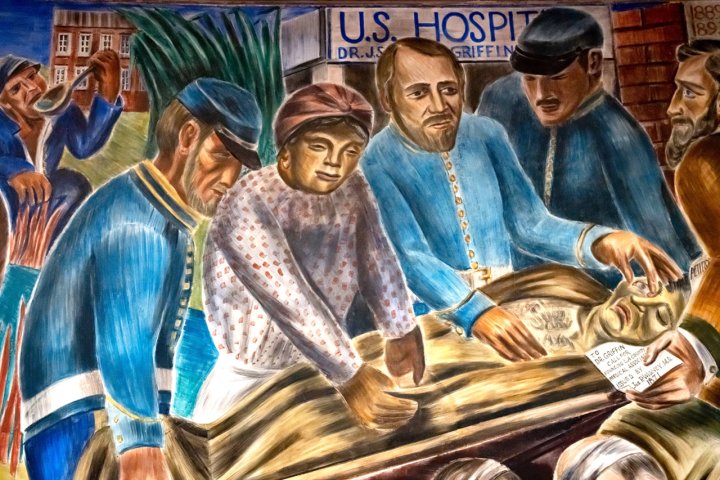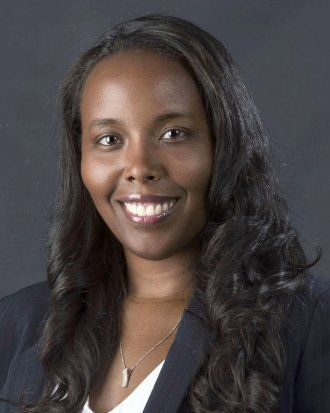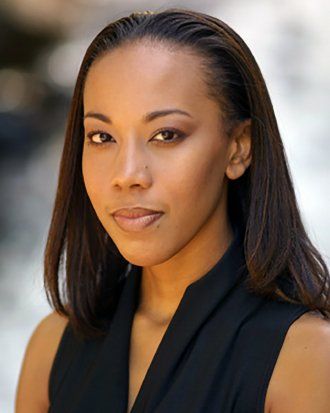The Open Hand: A Conversation with the Descendants of Biddy Mason

Bridget "Biddy" Mason is shown treating a soldier suffering from malaria in a detail from the “History of Medicine in California” murals. She is depicted as a medical practitioner on equal footing with John S. Griffin (center) and Joseph Pomeroy Widney (right), two renowned physicians of early Los Angeles. Photo by Susan Merrell
UC San Francisco is reviewing proposals from historic preservation experts for the delicate task of moving 10 large, mostly curved WPA-era frescoes – titled “The History of Medicine in California” – from the aged building that houses them. The building no longer meets state seismic codes and needs to be replaced, prompting a search for a new home for the historic murals. If the murals can be safely moved, UCSF’s goal is to re-install them in a location where they can be expertly maintained and appreciated by future generations.
The murals were painted onto the plaster walls of Toland Hall auditorium by Polish-born artist Bernard Zakheim and his team in the late 1930s and depict a range of subjects from California history, including the medical practices of Native Californians; scenes from Spanish, early American, and Gold Rush California; and the founders of the UC Medical School. One of the most remarkable images depicted in these murals shows Bridget “Biddy” Mason, a former slave who won her freedom in a San Bernardino court in 1856 and rose to become a pioneering midwife, entrepreneur, and philanthropist in Los Angeles, where she is celebrated as a key founder of L.A.’s Black community.
“The History of Medicine in California” murals are mostly curved WPA-era frescoes housed in an aged building that no longer meets state seismic codes and needs to be replaced.
UCSF asked Cheryl and Robynn Cox, who are sixth-generation descendants of Biddy Mason, about the legacy of their great-great-great-great grandmother, her depiction in the Zakheim murals, and its importance in the midst of the present national conversation on anti-Black racism. The following conversation has been edited for length.
Cheryl Cox works in development and marketing and is president of The Biddy Mason Foundation™. Robynn Cox, PhD, is an assistant professor at the USC Suzanne Dworak-Peck School of Social Work, where she specializes in criminal justice reform.
UCSF: Tell us about the story of Biddy Mason. Who was she and why is she such an important figure in Black history?

Robynn Cox, a direct descendant of Biddy Mason. Photo courtesy of USC Suzanne Dworak-Peck School of Social Work
Robynn: Biddy Mason was born into slavery on Aug. 15, 1818. She walked from Mississippi to Utah, then to Southern California, herding animals and tending to the needs of her slave master, all while caring for her three small children, Ellen, Anne and Harriet. After arriving in California, she successfully fought for and won her freedom through the court system in 1856, at the age of 38. She then worked for Dr. John S. Griffin as a nurse and midwife. She also founded a school and foster home and the largest and oldest Black church in Los Angeles, the First African Methodist Episcopal Church (FAME). She is an American Hero and is famous as one of the first pioneers of Los Angeles, where the people knew her affectionately as “Aunt Biddy” or “Grandma Biddy.”
Grandma Biddy saved her money and eventually amassed great wealth by the time of her death in 1891. Despite her wealth, she continued to serve the community, treating anyone in need, black or white, as well as those no one else wanted to help, such as prisoners. She gave shelter to the home-less and fed the hungry. To the black community, her accomplishments provide confirmation and inspiration that, when given the support and opportunity, it is possible to overcome even the toughest of circumstances.
Six generations later, you and your sister both call Los Angeles your home. How has Biddy Mason’s legacy influenced your lives and the philanthropic work of the Biddy Mason Foundation™ established by your family?
[Note The Biddy Mason Foundation™ and the family of Biddy Mason are not affiliated with the Biddy Mason Charitable Foundation, also based in L.A. Learn more about the family of Biddy Mason by visiting BiddyMason.info.]

Cheryl Cox, a direct descendant of Biddy Mason. Photo courtesy of Patrick Tower Photography
Cheryl: For almost two centuries our family has been involved in charitable work and service to our community, based on the legacy passed down to us by Biddy Mason. My mother, my grandfather, and my great-grandmother all taught me to give to those less fortunate without a second thought.
I run my own creative business that specializes in branding, marketing and fundraising development focusing on serving under-served groups – I have a nationwide clientele that includes: universities, hospitals, medical practices, nonprofits, and small business owned by women-of-color. I also serve as the president of The Biddy Mason Foundation™, which I co-founded with my mother as a way for Biddy Mason’s living descendants to honor her legacy and expand on the philanthropic work she started so long ago.
To honor Grandma Biddy as a pioneer in medicine, the Foundation participates in annual medical missions across the world. Our latest mission, this past February, brought me to Haiti, part of a yearly medical collaboration with The Gift of Sight, Howard University Medical School and the Friends of the Children of Lascahobas, Haiti. To honor the school Grandma Biddy founded, across the country we donate hundreds of backpacks filled with school supplies to homeless children’s programs. We also donate backpacks filled with food and shoes to children and adults in need around the world. To honor the church Grandma Biddy founded, we participate in church programs that provide for the underprivileged: food, toy, foster care, homeless and tutoring.
Grandma Biddy lived without judgment and was willing to help anyone in need. As a result, we proudly partner with nonprofits to support programs that offer services to those transitioning from rehabilitation centers, prisons, and other institutional settings. We are especially grateful for the work we get to do at home, in Downtown Los Angeles, where Grandma Biddy served her community and where her home is commemorated by the Biddy Mason Memorial Park.
Robynn: After our mother passed away, my sister and I became the oldest living descendants of Biddy Mason. Including my two beautiful children, Daniel and Dakota, there are just four living descendants in total.
Our mother, Linda Cox Brown, was an extraordinary woman, who embodied Biddy Mason’s proverb, which has been passed down from generation to generation: “If you hold your hand closed, nothing good can come in. The open hand is blessed, for it gives in abundance, even as it receives.” Like Grandma Biddy, our mother taught us about the importance of real estate and business, but also giving back to the community with empathy and compassion.
As an assistant professor of social work at USC and one of the few Black women economists in the country, I often think about the parallels between my fourth great-grandmother’s work and my own. Biddy Mason fought for social justice and administered aid to all of those in need, even when others would not. This can most easily be seen when she provided medical attention, during times of illness, to those incarcerated, at great risk to her own personal health. While my own work is not quite as brave, I too have been working to understand the social, economic, and health consequences of mass incarceration policies that have disproportionately impacted communities of color, in order to improve public policy, and ultimately the lives of those who continue to be excluded from society.
In the midst of the current national discussion of racial justice and the value of Black lives, what lessons can we learn from Biddy Mason’s life?
Robynn: I have written about the duality of the criminal justice system within the United States, and how this system treats people differently based on the color of their skin and/or their ethnicity. The continuous state-sponsored abuse and killings of unarmed Black men, women and children, compounded with the lack of accountability for these murders, continues to send a message that Black lives do not matter. However, many years prior, this same system protected Biddy Mason from oppression, and she won her freedom through the court system. But it should also be noted that her case was the exception and not the rule: the year after she obtained her freedom, Dred Scott lost his petition for freedom through the courts.
Nonetheless, with her freedom, Grandma Biddy was able to accomplish great things and become a pillar of her community. Biddy Mason provides a clear example of the promise of what America could be if it were to remove systemic barriers that continue to oppress historically marginalized groups. How many Biddy Masons have been pushed aside or incarcerated because of economic and social inequities? Ultimately, Biddy Mason is a living demonstration of how great this country could be if it honored its principles of inclusion and guaranteed that Black Lives Matter.
We were fascinated to learn earlier this summer about Biddy Mason’s story and her portrayal in the “The History of Medicine in California” murals. Can you tell us about how you learned of the depiction of Biddy Mason in the Zakheim murals, and what those images mean to you?
Cheryl: Five generations of our family have known about Biddy Mason’s depiction in the murals. I remember hearing about them from my great-grandmother, Biddy Mason’s great-granddaughter. As a child, I thought it was cool that my Grandma Biddy was painted directly on the wall at a university, not as a picture that can be taken down at someone’s leisure but as a permanent installation, a “forever picture.”
It was only after majoring in African-American studies at UC Berkeley, that I could truly appreciate and understand the gravitas of the mural. I would be remiss if I didn’t speak about the lack of Black people in medicine, the lack of women in medicine, and the lack of recognition for all of the above in the 1930s, when the murals were painted, let alone the 1800s. My Grandma Biddy, a former slave who somehow, without being able to read or write, became a skilled nurse and midwife, was depicted by Bernard Zakheim as a trailblazer in California’s history of medicine. My Grandma Biddy, a Black person and a woman, was featured on equal footing with her all-male counterparts. Zakheim placed her in the center of his mural panel, all eyes are drawn to the only brown face on her entire panel, and she is performing medical care, not receiving it. This painting is the only one I am aware of that depicts a former slave as an equal, and it was created during a time of segregation by a man who was not Black. The rarity and foresight in Zakheim’s work was way ahead of his time.
As you know, we are now evaluating formal proposals from firms with experience in the preservation of historic art to identify solutions for removing and relocating the murals without damaging them. What are your thoughts on the future of the murals?
Cheryl: The family of Biddy Mason has always treasured Bernard Zakheim’s depiction of our grandmother in the “The History of Medicine in California” murals and viewed it as a historic landmark. We appreciate that as soon as we reached out to UCSF, you’ve been very receptive to our concerns and have kept us abreast of what you are trying to do. While we understand that UCSF must bring the campus up to California seismic codes, we are hopeful that the University will come up with a way to preserve the murals.
If the murals couldn’t be saved, our family would be devastated at the loss. I have dedicated my life to art and feel no work of art should ever be destroyed. But more importantly, in current American society, African-Americans are having daily conversations addressing the lack of inclusion, diversity, and the injustice we face. Biddy Mason represents intersectionality, both as a woman and as an African-American. During our current racial climate, it is imperative that we rightfully acknowledge and honor the contributions of Black people in the history of America, thus finding a way to preserve these murals is crucial.
We remain hopeful that “where there’s a will there’s a way,” and that UCSF can identify an expert that can successfully move the murals. Our wish is for these murals to be preserved and honored as a historically significant and unique piece of American history, hopefully in a home where they can be seen for many generations to come.